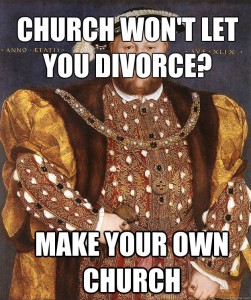Hello all!
Further to our discussion last day, I’d like to summarize and flesh out my points a little bit regarding the relationship between Chapra and his mother – I think my discussion was a bit too hasty, and I apologize.
The three main points I had wanted to discuss were:
- The suggested nature of the relationship
- The effect of the appellation “Mother” or “Oka-san” as opposed to giving her a name
- Whether or not the relationship could be connected to things that we’ve studied in the past (e.g. FREUD)
So let’s get to it!
With the first question, I’m not necessarily looking at what Tezuka is explicitly saying – more at what layers we can extract out of, say, the relationship’s effect on Chapra and his self-perception, or what sub-messages might be conveyed by the way Tezuka depicts the characters and the dialogue he gives them. It’s true that the two of them depend on each other for their livelihood – they are, effectively, each other’s reason for living – but to what degree is Chapra’s idea of himself as a male changed by this dependence? When he becomes General Budai’s heir, or when he becomes involved with the Vizier’s daughter, how much is the reader made to think that those aren’t really things Chapra prioritizes – that the glory and the masculinity “brownie points” that come from continual victories and strong “lineage” lose their relevance because of how much Chapra is obtaining them just for his mother? I suppose, to use a colloquial term, that would make him more of a “mama’s boy” than anything else. Especially at the point when he had everything, I thought he would go bad and forget about his mother, but when the two of them die, their dialogue and the last image seen by the reader – of the two of them dead on the cliff – seems to suggest that Tezuka never intended for him to be anything other than his mother’s son.
With regards to the second point, I was intrigued by something that Christel brought up in discussion yesterday – Tatta calls Mother “Momz” too. Looking at the Japanese version, there’s nothing peculiar about how colloquial it sounds – it’s just part of the way Tezuka believes Tatta, a 7-year old boy, would talk, which is apparent from the rest of the diction in both languages. But more importantly, why does Tatta, too, refer to her maternally? It might just be because Chapra entrusted her to him, to take her as his own mother, but what I’m trying to get at is that this appellation changes the way she is viewed as a character, despite her appearance and her presumed age. She becomes nothing more than “the slave woman” or, more so, “Chapra’s mom”, which speaks to the amount of relevance Tezuka gives her as a character on her own.
Okay, now I think this is starting to make some sense.
Another point I’d like to look at is how Chapra interacts with General Budai – what the presence in his life, finally, of a father figure – who is of the caste he wishes to be – does, and how he grapples with it. The section on page 232-233 is of particular note:
General Budai: Watching you, I’m not sure your motives are good. It’s as if you’re trying too hard. You’re trying to wipe away your past by becoming a warrior of renown. That’s why you push yourself. Am I wrong?
Chapra: My past has nothing to do with it! I am Warrior Chapra, son of General Budai. That’s all that matters!
So even Budai can see that Chapra’s motivation to move upward isn’t really his. There’s something beneath the surface – his filial attachment to his mother, as strong as it was when he was a child. And however much he wants to escape his fate, it seems to come from his wish to give his mom the best things.
I might also note that in the Japanese version, Chapra calls Budai “Oto-san” – the equivalent, in formality, of what he calls his mother, “Oka-san”. However, for a family who is of higher rank, the typical term a son might use to express his reverence for his father and their station would be “Chichi-ue” or “Haha-ue”, which literally is made up of the character for “Father/Mother” and the character for “up” or “above”. Chapra the slave boy might not have known it; Budai may or may not have insisted on such respect in his household; more likely (in my opinion) Tezuka might have used it to suggest that Chapra is not fitting in that well to his new station. Names matter – especially to the levels of formality built into the Japanese language.
Finally, I think Chapra’s inability to “be his own man” could also be interpreted as an inability to progress from his childhood reliance on his mother – further accentuated by the fact that there was no father with whom he would be in competition for his mother’s affections. And if you’re really looking, some scenes, such as the oft-cited one in the cellar on page 90, or the ending, as mentioned above, could provide evidence for the Oedipus complex. When Budai appears in his life, and as he physically matures, he starts to act more characteristically, engaging in duels and trials of strength, and fixating on a female of his age. You could say that the introduction of the castration complex, with Budai, is forcing him to grow up. But being a man on the exterior, who is emotionally and at heart a boy, he regresses to his childhood reliance on his mother to his very death.
Ultimately, I think all this builds to the idea that Tezuka intended for Chapra and his mother to come as a package deal. No matter for how long they are physically separated, they always exist in terms of each other, if that makes any sense. If they are ever brought up again in later volumes, what will come up will most definitely be the strength of their bond – a familial one, between two members of a lower caste – and one demonstrating these so-called slaves’ humanity and capacity to love.
P.S. if you’re wondering about the title, come ask me 😉
![The evening lights of Victoria Harbour, Hong Kong. By User User:Dice on zh.wikipedia [GFDL (http://www.gnu.org/copyleft/fdl.html) or CC-BY-SA-3.0 (http://creativecommons.org/licenses/by-sa/3.0/)], via Wikimedia Commons](https://blogs.ubc.ca/artsonethinkingec/files/2016/02/800px-香港维港夜色-300x153.jpg)
![I wanted to look for a cool picture that encapsulates what I'm talking about, and it turns out there's this sculpture called "Dance on a Volcano" by Ludmila Seefried-Matejkova that expresses this concept exactly. My work has been done for me. By p.schmelzle (Own work) [GFDL (http://www.gnu.org/copyleft/fdl.html) or CC BY-SA 3.0 (http://creativecommons.org/licenses/by-sa/3.0)], via Wikimedia Commons](https://blogs.ubc.ca/artsonethinkingec/files/2016/01/Berlin-wedding-nettelbeckplatz2-225x300.jpg)




![Darth Vader. By Ron Riccio [CC BY 2.0 (http://creativecommons.org/licenses/by/2.0)], via Wikimedia Commons](https://blogs.ubc.ca/artsonethinkingec/files/2015/09/DarthVaderPadawanAcademy-200x300.jpg)
![The Hertfordshire countryside in England, on which Naboo is partially based. Jack Hill [CC BY-SA 2.0 (http://creativecommons.org/licenses/by-sa/2.0)], via Wikimedia Commons](https://blogs.ubc.ca/artsonethinkingec/files/2015/09/Hertfordshire-300x225.jpg)